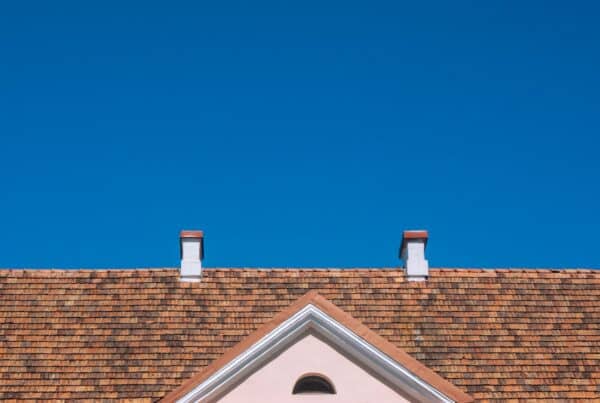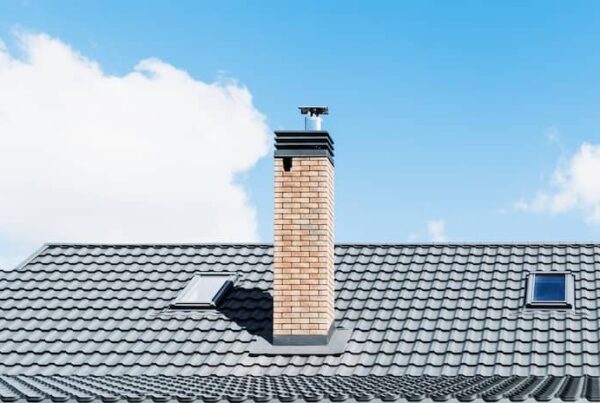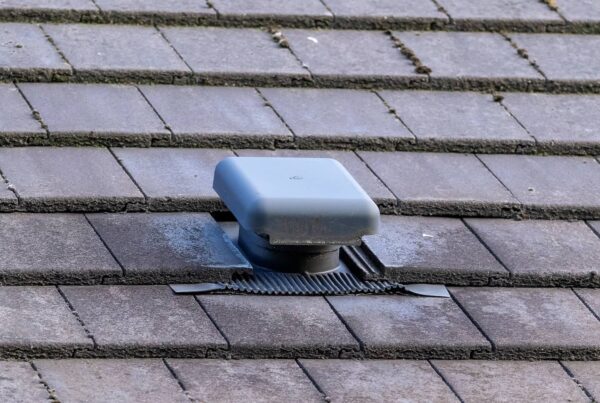
In the Pacific Northwest, your roof works harder than almost any other part of your home. With long rainy seasons, cool temperatures, strong winds, and heavy moss growth, roofs in Washington take on more wear than roofs in many other parts of the country.
The type of roof you have plays a major role in how it ages, how much maintenance it needs, and when problems begin to show.
This guide covers the different types of roofs you will find across Washington, how each material ages in our climate, what local home inspectors look for, and how to keep your roof in good shape for years.
The Roofs Most Common in the Pacific Northwest
According to the International Association of Certified Home Inspectors, the average life expectancy of a typical residential roof is 15 to 20 years.
Homes across areas like Olympia, Tacoma, Lacey, Yelm, and other nearby communities use roofing materials that can handle long periods of moisture. Here are the roof types you will see most often.
Common Roof Types in Washington
| Roof Type | Why It’s Common | Typical Lifespan in PNW |
| Asphalt shingles | Cost-effective. Easy to repair. Works for most home styles. | 15 to 25 years |
| Metal roofing | Strong in rain and wind. Long lifespan. | 40 to 70 years |
| Cedar shake | Natural look that fits wooded neighborhoods. | 20 to 30 years with care |
| Composite or synthetic shingles | Durable with good curb appeal. | 30 to 50 years |
| Flat or low-slope roofs | Popular in modern homes, garages, and additions. | 15 to 30 years |
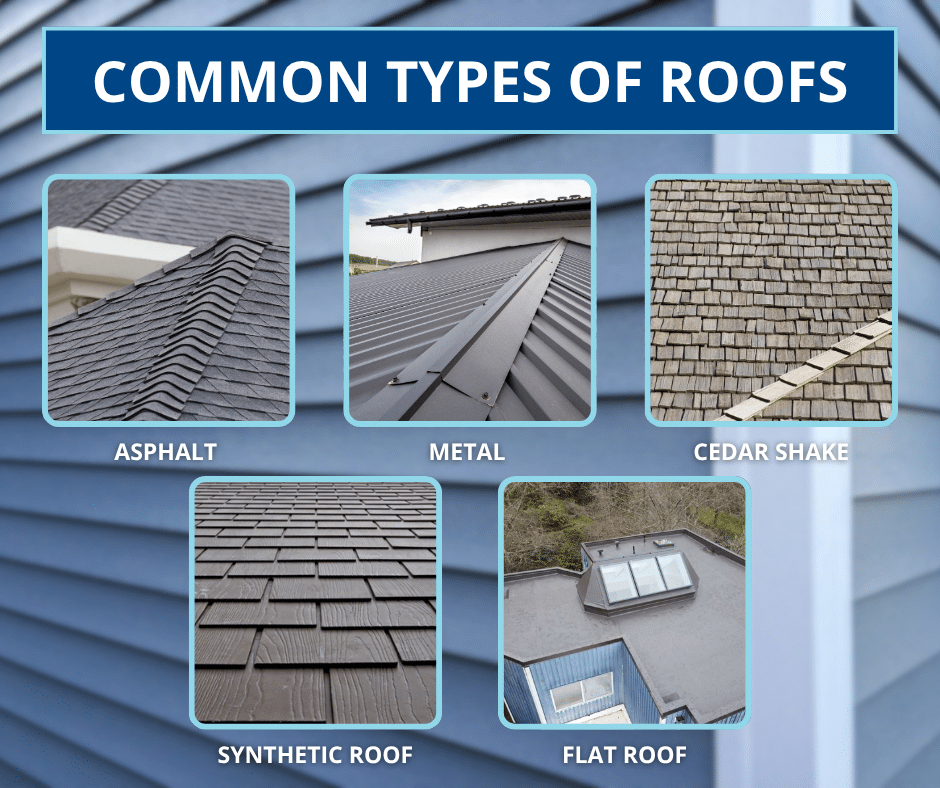
How Asphalt Shingle Roofs Age in the Pacific Northwest
Asphalt shingles are the most common roof material in Washington and tend to age faster in wet climates.
How They Age
- Moisture weakens shingles and shortens their life
- Granules wash away faster during long rainy seasons
- Moss grows easily on the shaded sides of the home
- Wind-driven rain loosens and lifts shingles
In shaded neighborhoods around Olympia or Shelton, moss can take root in one or two seasons. Moss holds moisture against the shingles, which leads to curling, cracking, and early breakdown.
What Inspectors Look For
- Bald spots where granules are missing: This shows the shingles are wearing thin and losing their protective layer.
- Lifted or loose shingles: These can allow water to sneak under the roof surface.
- Moss and lichen buildup: Thick moss is a major sign of moisture damage.
- Soft decking underneath: Soft spots mean water has soaked into the wood layer.
- Nail pops: Raised nails let water flow under the shingle.
- Flashing gaps around chimneys or skylights: These gaps are a leading cause of leaks in Washington.
Maintenance Tips
- Clean the roof yearly
- Keep gutters free of leaves and needles
- Install copper or zinc strips to reduce moss
- Trim branches to increase sunlight
How Metal Roofs Age in the Pacific Northwest
Metal roofs have excellent lifespans and handle heavy rain well, but still need periodic checks.
How They Age
- Fasteners loosen over time
- Protective coatings wear down in coastal areas
- Rust forms around seams or cuts
- Expansion and contraction increase noise over the years
Metal roofing is common in rural areas around Yelm, Lacey, and Tumwater, and is popular for its long lifespan.
What Inspectors Look For
- Loose or backing-out fasteners: Loose fasteners create small gaps that allow water to enter.
- Rust spots near screws or seams: Rust means the protective coating is failing.
- Worn or missing sealant: Sealant keeps water out of roof seams.
- Damaged or bent panels: Bent panels show wind or impact damage.
Maintenance Tips
- Wash the roof every couple of years
- Tighten loose screws
- Repaint or reseal worn areas
How Cedar Shake Roofs Age in the Pacific Northwest
Cedar shake roofs look beautiful in wooded Washington neighborhoods, but age quickly in damp conditions.
How They Age
- Shakes swell, warp, or split due to moisture
- Moss grows fast in shaded areas
- Mold forms between shakes
- Uneven sun exposure causes irregular wear
Cedar roofs are common in neighborhoods with large evergreens, where shade slows drying and increases wear.
What Inspectors Look For
- Rotting or soft shakes: Soft shakes show moisture damage and decay.
- Thick moss growth: Deep moss reduces airflow and traps moisture.
- Insect damage: Pests target damp cedar wood.
- Missing or cracked shakes: Gaps expose the underlayment.
- Exposed underlayment: This is a sign that the roof is near the end of its life.
Maintenance Tips
- Hire a professional for cleaning
- Remove moss regularly
- Re-oil shakes as needed
- Improve ventilation
How Composite and Synthetic Roofs Age in the Pacific Northwest
Composite shingles offer good durability and moisture resistance.
How They Age
- Fading from UV exposure
- Brittle edges after cold winters
- Weakening adhesives in older installs
- Moss growth in shaded areas
What Inspectors Look For
- Cracking or curling edges: These signs show the material is aging.
- Loose shingles: Loose pieces can allow water underneath.
- Color fading: Fading signals UV damage.
- Gaps in ridges or valleys: Gaps allow water to enter the roofing system.
Maintenance Tips
- Remove debris
- Clean early moss
- Schedule regular roof inspections
How Flat or Low-Slope Roofs Age in the Pacific Northwest
Flat roofs struggle with moisture and require good drainage to last.
How They Age
- Water pools on the roof surface
- Membrane blisters or cracks
- Drains clog easily
- Moss spreads around low spots
What Inspectors Look For
- Ponding water: Standing water breaks down the membrane.
- Punctures in the membrane: Small holes lead to major leaks.
- Poor drainage: Clogged scuppers and drains cause water backup.
- Cracks around pipes and vents: These cracks allow water to seep into the roof layers.
Maintenance Tips
- Check drains each season
- Remove standing water
- Inspect the membrane yearly
What Washington Home Inspectors Look For On All Roof Types
Washington home inspectors understand how local weather affects roofs. They review every part of the roof system to detect early issues before they become costly repairs.
Structural Integrity
- Decking condition: Soft or sagging spots show moisture damage under the roofing.
- Underlayment issues: Worn or missing underlayment increases the risk of leaks.
- Flashing failures: Gaps around chimneys, skylights, and walls are common leak points in our climate.
- Sagging or uneven surfaces: Uneven areas may mean hidden rot or structural problems.
Ventilation and Moisture Control
- Proper attic airflow: Good airflow prevents condensation and mold in the attic.
- Signs of trapped moisture or mold: Dark stains or musty smells show the attic is staying damp.
- Vent blockages or compressed insulation: Blocked vents trap heat and moisture, which shortens roof life.
Water Shedding and Drainage
- Shingle alignment: Misaligned shingles let water flow under the roof surface.
- Valley condition: Valleys carry heavy water flow and fail faster in rainy regions.
- Gutter performance: Gutters must move water away, or the roof edges begin to rot.
- Downspout flow at the foundation: Poor drainage raises the risk of moisture problems inside the home.
Maintenance Indicators
- Dirty or clogged gutters: Blocked gutters push water onto the roof surface.
- Branches touching the roof: Branches scrape the roof and increase moss growth.
- Old flashing around skylights and chimneys: Worn flashing is one of the biggest leak sources in Washington.
- Debris piles in valleys: Debris keeps the roof wet and encourages moss.
Climate Factors That Speed Up Roof Aging in the Pacific Northwest
Washington’s climate creates conditions that shorten roof lifespan if inspected or maintained poorly.
- Long rainy seasons: Roofs stay wet for long periods, which weakens materials.
- Constant moisture and cloud cover: Cloudy weather slows drying and increases rot risk.
- Moss and algae growth: Moss holds moisture against the roof surface and damages materials.
- Windstorms in fall and winter: Strong winds loosen shingles and push water under roof surfaces.
- Freeze and thaw cycles: Water freezes overnight in small cracks and makes them larger.
- Shaded yards with limited sunlight: Roofs stay wet longer in neighborhoods filled with tall trees.
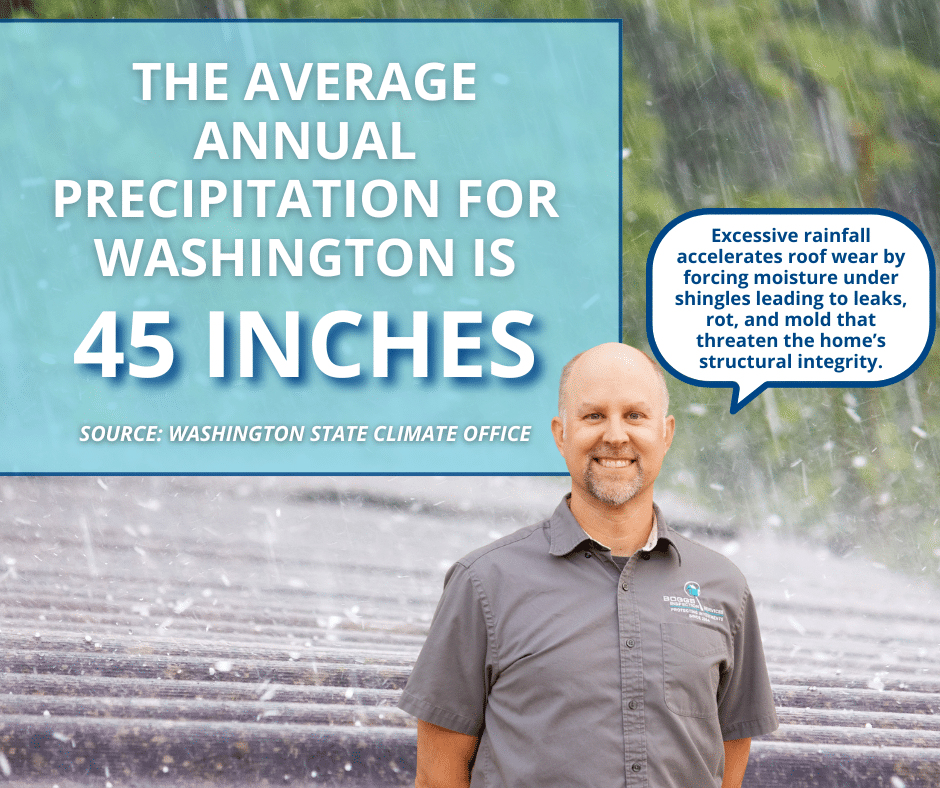
How Regular Maintenance Extends Roof Life
Regular care helps Washington homeowners avoid leaks, wood rot, and costly repairs.
Simple Tasks for Homeowners
- Clean gutters twice a year: This helps water drain off the roof instead of backing up.
- Remove roof debris: Leaves and needles hold moisture and damage shingles.
- Wash away early moss growth: Early moss removal stops deeper root damage.
- Trim branches that shade the roof: More sunlight helps the roof dry out faster.
- Check flashing during seasonal changes: Seasonal temperature shifts loosen flashing, so checks help prevent leaks.
Material-Specific Care
| Roof Material | Recommended Care | Why It Matters in the PNW |
| Asphalt Shingles | Apply a light moss treatment once a year | Helps prevent moss from eating into shingle surfaces and shortening lifespan |
| Metal Roofing | Tighten fasteners every few years and check coatings | Keeps panels secure during windstorms and prevents rust in wet conditions |
| Cedar Shake | Schedule professional cleaning and re-oiling | Repels water and slows cracking, rot, and moisture damage in shaded, damp areas |
| Composite or Synthetic Shingles | Remove debris and check ridge caps | Ridge caps show early wear, and clean surfaces resist moss better |
| Flat or Low-Slope Roofs | Keep all drains and scuppers clear at all times | Ensures proper drainage so that standing water does not damage the membrane |
Related Questions
What roof type lasts the longest in Washington?
Metal roofing usually lasts the longest because it sheds water well and resists moss.
How often should I clean my roof in the Pacific Northwest?
Most homes need cleaning once a year. Shaded roofs need more frequent cleaning.
Do gutter guards help in rainy areas?
Yes. They keep water moving away from the roof and reduce clogging.
How do I know if my roof needs repair or replacement?
Leaks, sagging, missing shingles, and ponding water are strong signs.
When to Call a Professional
You should call a roofing professional or home inspector if you see:
- Missing or curling shingles
- Thick moss growth
- Water stains inside the attic
- Sagging areas of the roof
- Leaks around skylights or chimneys
- Ponding water on a flat roof
If you haven’t had a roof inspection in several years, now is a good time to schedule one. Regular inspections prevent small issues from turning into expensive repairs.
Conclusion
Understanding how different types of roofs age in the Pacific Northwest helps you take care of your home and avoid major damage.
Each roof material behaves differently in our wet climate, but with proper maintenance and regular inspections, you can extend the life of your roof and protect your home.
Boggs Inspection Services is here to help you keep your home safe and well-maintained. If you want peace of mind before buying or selling a home or simply want to stay ahead of roof problems, scheduling a roof inspection is a smart choice.

